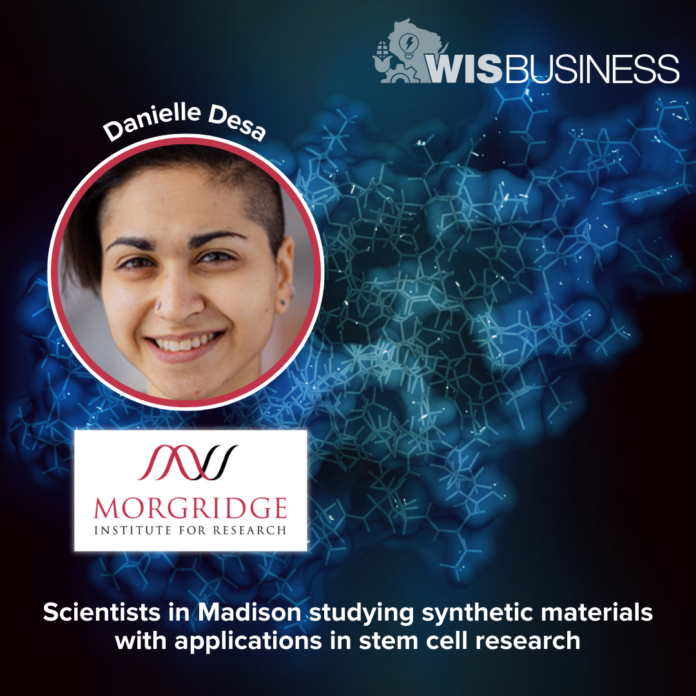Scientists with the Morgridge Institute for Research in Madison have been testing new synthetic materials used for turning stem cells into heart muscle cells, with applications in bio-manufacturing.
Danielle Desa is a post-doctoral fellow with the research institute, which has deep ties to UW-Madison. She spoke yesterday during a Wisconsin Technology Council luncheon in Madison, putting a spotlight on imaging techniques used to assess these synthetic materials.
The materials — used as a scaffold for growing stem cells as they differentiate — could play a key role in efforts to treat damage to heart muscle cells resulting from cardiovascular disease, Desa explained. While humans can’t regrow these heart cells, called cardiomyocytes, on their own, stem cells can be “very efficiently” transformed into the desired cardiac cells.
“Having these cell batches available for us to do research with opens up lots of avenues for regenerative medicine, disease modeling and cardiotoxic drug screening,” Desa said.
While getting the stem cells to become the heart cells is possible, she noted “the real trick is to get them to actually behave and mature like an adult heart cell would” within the body. In order to study them as they mature, scientists often use a material called Matrigel that’s derived from mouse tumors. But batches of this membrane material can vary in their chemical and physical makeup in inconsistent ways, Desa said.
In hopes of creating a better alternative to this material, UW-Madison Prof. William Murphy is working on synthetic options that would be more consistent.
“Something that’s really cool and great for us as scientists, is that these synthetic gels have independently tunable properties,” Desa said. “So if you want to, say, change how stiff the gel is or the concentration of one component you’re putting in, you can do that one thing at a time, and see which combination of those things impact the maturation of these cells.”
To track that maturation process on the synthetic scaffold, researchers including Desa used an imaging technique to see metabolic changes in the developing cells over the course of the experiment.
“We were actually able to do this imaging across the entire gel, kind of assess that substrate, that surface as a whole, and we found that the gels fabricated by the Murphy lab do support cardiomyocyte growth, differentiation and maturation,” she said, adding the team used “accessible tools to make this technology something that could be adopted in the bio-manufacturing sphere.”
See more on the work being done at the Murphy lab.






